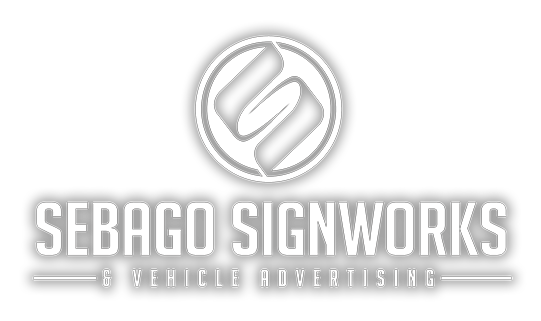

Interior signage often gets less attention than flashy exterior signs or vehicle wraps (both of which Sebago Signworks does extremely well). But once a visitor crosses the threshold into your building, what happens next is just as important. When they enter your business – how they navigate, how they feel, and what impression they get will set the tone for their interaction with your business. That’s why interior signage – and in particular signage that complies with the Americans with Disabilities Act (ADA) – is so vital.
Interior signage becomes even more important – and higher stakes – when we talk about ADA compliance. ADA signage refers to the signs that identify permanent rooms and spaces (e.g., restrooms, offices, stairwells), or direct/inform about key features. ADA signage must meet certain technical standards, including raised characters, braille (for many types), high contrast, non-glare finish, and consistent placement.
Let’s talk about what you are saying to visitors when you do have good interior and ADA-compliant signage – and conversely, what you are saying to visitors when you don’t.
While ADA signage is important in nearly all buildings open to the public, there are specific industries and facilities where the stakes are especially high. Let’s look at a few:
In a hospital or healthcare environment, people are often already stressed and in unfamiliar surroundings. When someone is possibly impaired in mobility or vision, this situation becomes much more tense, making good interior signage absolutely critical. Restrooms, patient rooms, MRI/CT areas, stairwells, emergency exits, waiting areas – all these common spaces need good directional and placement signage. Having proper tactile signs ensures patients who may be visually impaired can also navigate safely.
Hotels often serve a wide range of guests – many carrying bags, arriving late, unfamiliar with the layout, and in a hurry. ADA signage helps ensure accessible guest rooms, accessible routes through the facility, and that restrooms and meeting rooms are clearly identified. It reinforces the hotel’s commitment to welcome everyone.
Schools are hubs of activity filled with students, staff, visitors, and sometimes young children or people with disabilities. Proper signage helps with orientation (classrooms, offices, labs, restrooms) and ensures compliance under education facility accessibility requirements.
City/town halls, libraries, recreation centers, municipal offices are all ‘public accommodations’ by definition. They serve all citizens. Failing to provide accessible signage here is especially problematic from both a message and legal compliance standpoint.
Whether in a large retail store or shopping mall, multi-tenant building, or multi-shop row – while not always as critical as hospitals, these are high-traffic spaces with diverse visitors. Clear, accessible signage improves the customer experience, and ensures all visitors feel wanted.
Even if your primary business is offices, if visitors come in (clients, vendors, job candidates), having interior wayfinding and ADA signage matters. It reflects on your corporate image, attitudes on safety, and professionalism.
Interior and ADA signage is a functional, strategic component of how your building works. It impacts how visitors feel, how easily they navigate, and how inclusive your space is. For any business or facility that welcomes the public, a signage system that includes proper ADA-compliant elements is no longer optional.
For organizations in hospitality, healthcare, education, government, retail, and beyond, proper interior and ADA signage reflects your brand values, protects you legally, and ensures everyone who walks through your doors feels properly welcomed and served.
If you’re looking to audit your signage, replace outdated signs, or implement a full interior signage program (including ADA compliance), Sebago Signworks is equipped to help. With the experience, equipment and design chops to deliver high-quality custom signs, we’ll help you upgrade your signage and make a strong statement about your commitment to accessibility and professionalism. CONTACT US TODAY